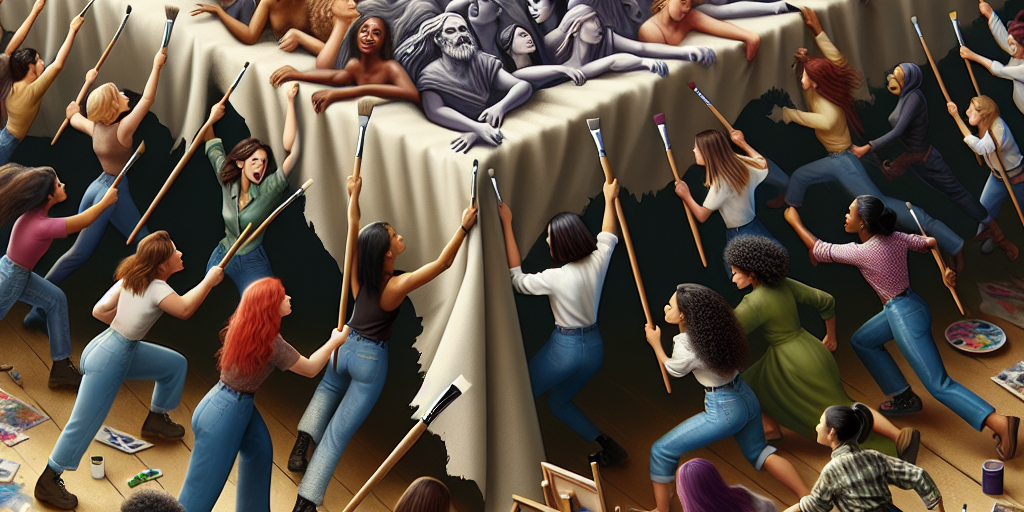Title: Breaking the Canvas Ceiling: The Struggle for Recognition of Female Artists in the Art Market
For centuries, art has been considered a universal language that transcends boundaries, yet within its vibrant and diverse landscape, female artists have often faced the silent but pervasive barrier of gender discrimination. Dubbed the "canvas ceiling," this enduring paradox sees female artists routinely marginalized in the highly competitive art market, despite displaying remarkable talent and creativity. As society evolves, so too does the call for breaking down this barrier, allowing female artists the same opportunities for recognition, representation, and prosperity as their male counterparts.
The Historical Context
Historically, art has been a male-dominated realm. From the Renaissance to the modern era, art movements have been primarily defined and documented by men. Women were largely denied access to formal art education, studios, and galleries. Those who managed to create under such restrictions often found their works devalued, attributed to male relatives, or entirely overlooked. Pioneering artists like Artemisia Gentileschi, Mary Cassatt, and Berthe Morisot overcame significant societal restrictions, yet they remain exceptions to a norm that has largely written women out of art history.
Innovations Amidst Invisible Boundaries
The 20th century saw significant strides with the emergence of modern art movements and the gradual rise in recognition of women like Frida Kahlo, Georgia O’Keeffe, and Louise Bourgeois. These women challenged the status quo, turning their personal experiences, perspectives, and gender struggles into universally resonant themes. However, despite the progress, female artists continued to face systemic challenges in the art market, where their works were undervalued compared to those by men, mirroring broader societal patterns of gender inequality.
Current Art Market Dynamics
Today, women comprise over half of the art school graduates, yet their representation in galleries and museums remains disproportionately low. Studies reveal that works by women artists make up a small fraction of art auctions and exhibitions and typically sell for less than those created by men. This discrepancy not only impacts female artists’ financial success but also perpetuates their underrepresentation in historical contexts and public consciousness.
Several factors contribute to these dynamics. Art market biases often reflect curatorial decisions, historic valuations, and collector preferences, which have long been skewed toward male artists. Institutional inertia and the replication of traditional art historical narratives further entrench these disparities.
Shifting Paradigms and Future Prospects
The push for gender equity in art is gaining momentum, spearheaded by initiatives, advocacy groups, and academic discourse. Institutes like the National Museum of Women in the Arts in Washington, D.C., work tirelessly to champion female artists by providing them with platforms and recognition. Online spaces have also democratized art expression and sales, offering women artists new avenues to reach audiences directly.
Contemporary cultural shifts advocate for inclusivity, and the art world is increasingly reflecting this change. Female artists are being celebrated not just for their gender, but for their contributions to art that challenge, provoke, and transform. Auction houses are beginning to highlight female-centric collections, and galleries are diversifying their rosters, often spurred by the realization that diversity sells and enriches the art world.
Breaking the Ceiling, One Canvas at a Time
The path toward equality in the art market remains fraught with challenges, but optimism persists as more stakeholders recognize the value and richness that female artists bring to the cultural tapestry. Breaking the canvas ceiling requires a concerted effort from all corners of the art world—from collectors and curators to educators and art lovers.
As female artists continue to reclaim their rightful place in history, the art market finds itself at a pivotal juncture. By championing diversity and leveling the playing field, we not only do justice to the countless women whose contributions have been overshadowed but also ensure a richer, more vibrant future for art itself.







